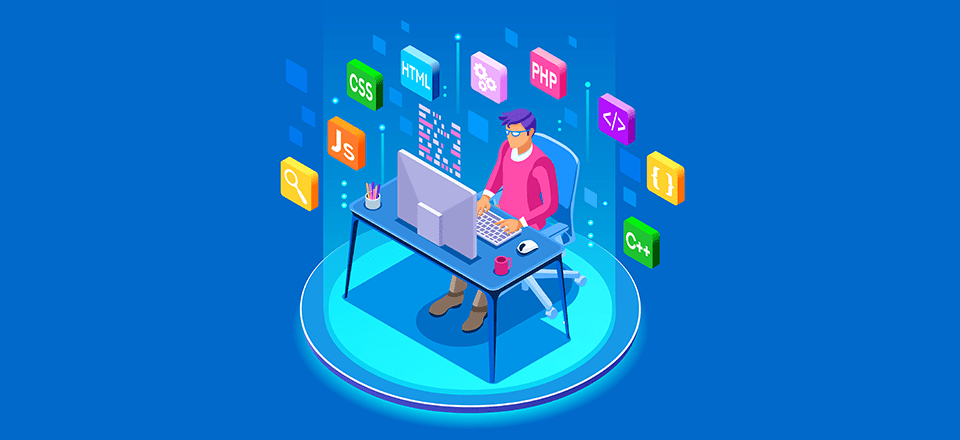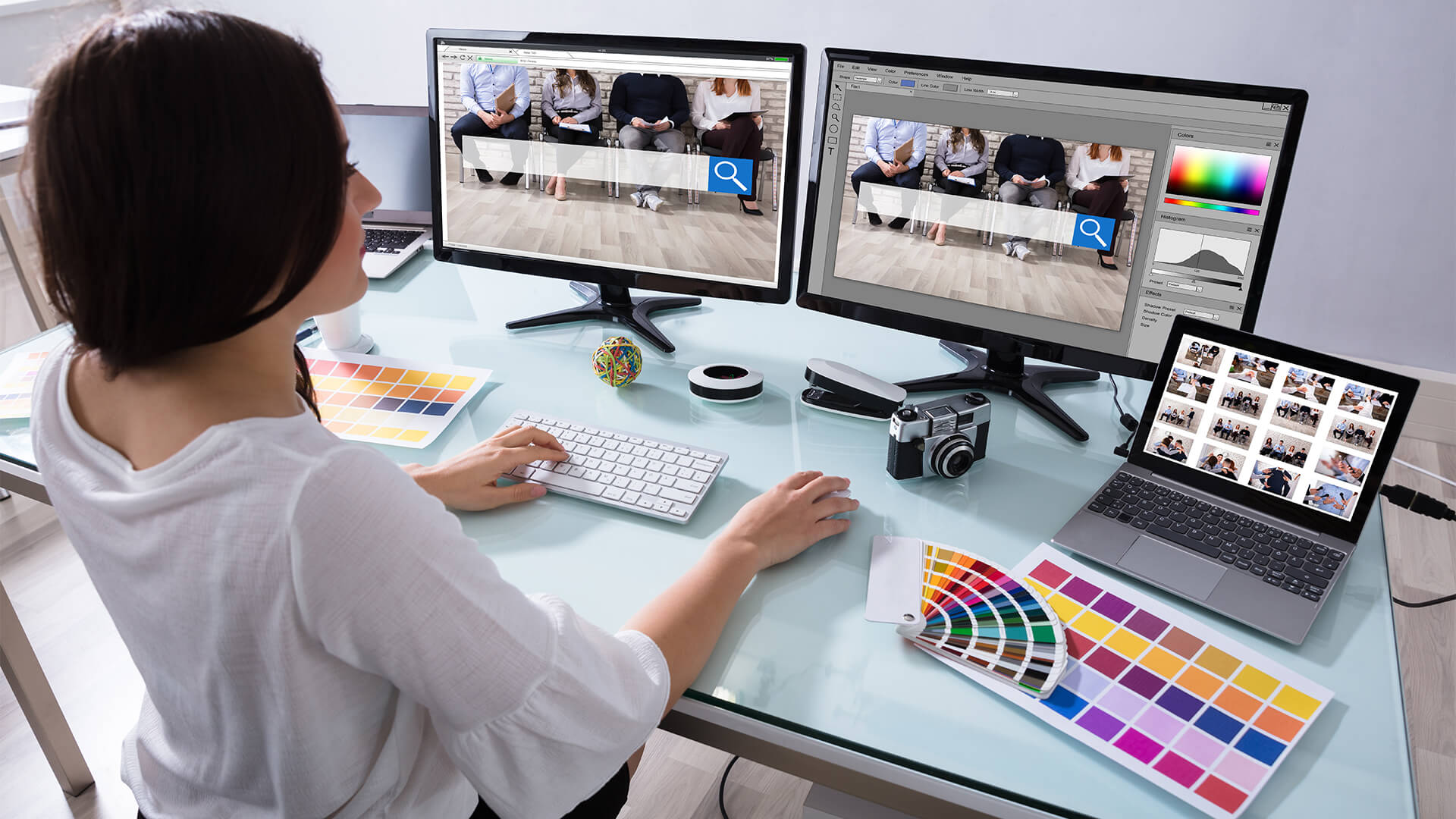All Categories
Featured
Table of Contents
- – Indianapolis Web Design And Digital Marketing ...
- – Google Web Designer - Home Tips and Tricks:
- – Responsive Web Design Certification - Freecod...
- – Trajectory: Atlanta Web Design Company Tips a...
- – Custom Website Design And Marketing - Inmotio...
- – Web Design Services - Networksolutions.com Ti...
- – Trajectory: Atlanta Web Design Company Tips ...
- – The Leader In Website Design – Squarespace T...
- – Web Design Studio & Digital Marketing Agency...
- – 53 Web Design Tools To Help You Work Smarter...
- – Web Development Bachelor's Degree - Full Sai...
Indianapolis Web Design And Digital Marketing Agency Tips and Tricks:
Quick summary Usability and the utility, not the visual style, determine the success or failure of a website. Because the visitor of the page is the only person who clicks the mouse and for that reason chooses everything, user-centric style has established as a basic technique for successful and profit-oriented website design - web design frederick md.
and the utility, not the visual style, identify the success or failure of a site. Since the visitor of the page is the only person who clicks the mouse and for that reason chooses whatever, user-centric style has become a basic method for successful and profit-oriented website design. If users can't utilize a function, it might as well not exist.
g. where the search box need to be placed) as it has actually already been done in a variety of posts; instead we focus on the methods which, used effectively, can result in more advanced design decisions and streamline the procedure of perceiving presented information. Please observe that you may be thinking about the usability-related posts we've released before: Principles Of Good Site Style And Reliable Web Design Standards, In order to use the principles correctly we initially need to comprehend how users connect with websites, how they believe and what are the standard patterns of users' behavior.
Google Web Designer - Home Tips and Tricks:
Visitors glimpse at each brand-new page, scan some of the text, and click on the first link that captures their interest or slightly resembles the important things they're looking for. There are big parts of the page they don't even look at. Many users look for something intriguing (or beneficial) and clickable; as quickly as some appealing prospects are found, users click.
If a page offers users with top quality material, they want to jeopardize the material with ads and the design of the site. This is the reason that not-that-well-designed sites with high-quality material gain a great deal of traffic over years. Material is more vital than the design which supports it.

Users do not check out, they scan. Notification how "hot" areas abrupt in the middle of sentences. This is typical for the scanning procedure. Extremely simple concept: If a website isn't able to meet users' expectations, then designer stopped working to get his job done properly and the business loses cash. The greater is the cognitive load and the less user-friendly is the navigation, the more prepared are users to leave the site and search for alternatives.
Responsive Web Design Certification - Freecodecamp.org Tips and Tricks:
Neither do they scan webpage in a direct style, going sequentially from one site area to another one. Rather users satisfice; they choose the first affordable choice. As soon as they find a link that appears like it might cause the objective, there is an excellent opportunity that it will be immediately clicked.
It doesn't matter to us if we comprehend how things work, as long as we can utilize them. If your audience is going to imitate you're creating billboard, then style great billboards." Users want to be able to manage their web browser and count on the constant data presentation throughout the website.
If the navigation and website architecture aren't intuitive, the variety of enigma grows and makes it harder for users to comprehend how the system works and how to obtain from point A to point B. A clear structure, moderate visual clues and quickly identifiable links can assist users to find their course to their objective.
Trajectory: Atlanta Web Design Company Tips and Tricks:

Because users tend to check out websites according to the "F"-pattern, these 3 declarations would be the very first aspects users will see on the page once it is loaded. The style itself is easy and user-friendly, to understand what the page is about the user needs to browse for the response.
As soon as you've attained this, you can interact why the system is helpful and how users can benefit from it. Don't Squander Users' Persistence, In every project when you are going to offer your visitors some service or tool, try to keep your user requirements minimal.
Newbie visitors are willing to, not filling long web kinds for an account they may never ever utilize in the future. Let users explore the website and find your services without requiring them into sharing private information. It's not affordable to require users to enter an email address to test the feature.
Custom Website Design And Marketing - Inmotion Hosting Tips and Tricks:
Stikkit is a perfect example for an easy to use service which requires nearly absolutely nothing from the visitor which is inconspicuous and comforting. And that's what you want your users to feel on your website. Obviously, Termite requires more. The registration can be done in less than 30 seconds as the type has horizontal orientation, the user doesn't even need to scroll the page.
A user registration alone is sufficient of an impediment to user navigation to minimize incoming traffic. 3. Manage To Focus Users' Attention, As websites provide both fixed and dynamic material, some elements of the interface draw in attention more than others do. Certainly, images are more captivating than the text just as the sentences marked as bold are more attractive than plain text.
Focusing users' attention to particular locations of the site with a moderate use of visual components can assist your visitors to get from point A to point B without thinking about how it actually is expected to be done. The less enigma visitors have, the they have and the more trust they can establish towards the business the site represents.
Web Design Services - Networksolutions.com Tips and Tricks:
4. Strive For Function Exposure, Modern web designs are generally slammed due to their method of assisting users with visually appealing 1-2-3-done-steps, big buttons with visual results etc. However from the style perspective these elements in fact aren't a bad thing. On the contrary, such as they lead the visitors through the site content in a really easy and user-friendly method.
The website has 9 main navigation alternatives which are visible at the very first look. The choice of colors might be too light. is a fundamental concept of successful user interface design. It doesn't actually matter how this is attained. What matters is that the content is well-understood and visitors feel comfy with the method they engage with the system.
Instead a rate: simply what visitors are looking for. An ideal service for effective writing is touse short and succinct phrases (come to the point as quickly as possible), use scannable design (classify the content, use numerous heading levels, utilize visual aspects and bulleted lists which break the flow of consistent text blocks), use plain and unbiased language (a promotion does not require to sound like advertisement; give your users some sensible and objective factor why they need to use your service or remain on your website)6.
Trajectory: Atlanta Web Design Company Tips and Tricks:
Users are rarely on a website to enjoy the style; moreover, for the most part they are trying to find the information despite the style - web design frederick md. Aim for simplicity rather of complexity. From the visitors' viewpoint, the finest website design is a pure text, with no ads or additional material blocks matching precisely the query visitors used or the material they have actually been searching for.
Finch clearly provides the details about the website and provides visitors an option of options without overcrowding them with unnecessary material. 7. Do not Be Afraid Of The White Space, Really it's really tough to overstate the significance of white space. Not just does it assist to for the visitors, but it makes it possible to perceive the information presented on the screen.
Complex structures are more difficult to read, scan, analyze and deal with. If you have the choice between separating two design segments by a noticeable line or by some whitespace, it's generally much better to use the whitespace option. (Simon's Law): the much better you handle to provide users with a sense of visual hierarchy, the simpler your material will be to perceive.
The Leader In Website Design – Squarespace Tips and Tricks:
The exact same conventions and rules need to be used to all elements.: do the most with the least quantity of hints and visual components. Clearness: all parts should be developed so their significance is not unclear.
Conventions Are Our Friends, Traditional style of website components doesn't result in a boring web website. It would be a functionality nightmare if all websites had different visual discussion of RSS-feeds.
understand what they're getting out of a site navigation, text structure, search positioning etc. A normal example from functionality sessions is to equate the page in Japanese (presuming your web users do not understand Japanese, e. g. with Babelfish) and supply your usability testers with a task to discover something in the page of different language.
Web Design Studio & Digital Marketing Agency • Gravitate Tips and Tricks:
Test Early, Test Typically, This so-called TETO-principle needs to be used to every web style task as functionality tests frequently provide into significant issues and concerns related to a given layout. Test not too late, not too little and not for the incorrect reasons.
Some crucial indicate remember: according to Steve Krug, and testing one user early in the task is much better than testing 50 near the end. Accoring to Boehm's very first law, mistakes are most frequent throughout requirements and style activities and are the more expensive the later on they are removed.
That implies that you design something, test it, repair it and after that check it again. There might be issues which have not been found throughout the preliminary as users were almost blocked by other problems. use tests. Either you'll be pointed to the problems you have or you'll be indicated the absence of major style defects which remains in both cases a beneficial insight for your task.
53 Web Design Tools To Help You Work Smarter In 2022 Tips and Tricks:

This holds for designers also. After you have actually dealt with a website for few weeks, you can't observe it from a fresh viewpoint any longer. You understand how it is developed and therefore you understand exactly how it works you have the knowledge independent testers and visitors of your website would not have.
It can be connected to other locations such as graphic style, user experience, and multimedia arts, however is more appropriately seen from a technological viewpoint. It has become a big part of individuals's daily lives. It is hard to imagine the Internet without animated graphics, various styles of typography, background, videos and music.

During 1991 to 1993 the World Wide Web was born. Text-only pages might be viewed using a simple line-mode browser. There had been no integrated method to graphic design components such as images or noises.
Web Development Bachelor's Degree - Full Sail University Tips and Tricks:
The W3C was created in October 1994 to "lead the Web to its full potential by developing typical procedures that promote its evolution and ensure its interoperability." This discouraged any one company from monopolizing a propriety web browser and shows language, which could have changed the result of the Internet as a whole.
As this has actually taken place the technology of the web has also moved on. There have actually also been significant modifications in the way people utilize and access the web, and this has actually changed how websites are created.
Learn more about Lovell Media Group LLC or TrainACETable of Contents
- – Indianapolis Web Design And Digital Marketing ...
- – Google Web Designer - Home Tips and Tricks:
- – Responsive Web Design Certification - Freecod...
- – Trajectory: Atlanta Web Design Company Tips a...
- – Custom Website Design And Marketing - Inmotio...
- – Web Design Services - Networksolutions.com Ti...
- – Trajectory: Atlanta Web Design Company Tips ...
- – The Leader In Website Design – Squarespace T...
- – Web Design Studio & Digital Marketing Agency...
- – 53 Web Design Tools To Help You Work Smarter...
- – Web Development Bachelor's Degree - Full Sai...
Latest Posts
Web Design Museum 1991 – 2006 Tips and Tricks:
Basics Of Web Development & Coding Specialization - Coursera Tips and Tricks:
Web Page Design: A Comprehensive Guide - Adobe Xd Ideas Tips and Tricks:
More
Latest Posts
Web Design Museum 1991 – 2006 Tips and Tricks:
Basics Of Web Development & Coding Specialization - Coursera Tips and Tricks:
Web Page Design: A Comprehensive Guide - Adobe Xd Ideas Tips and Tricks: